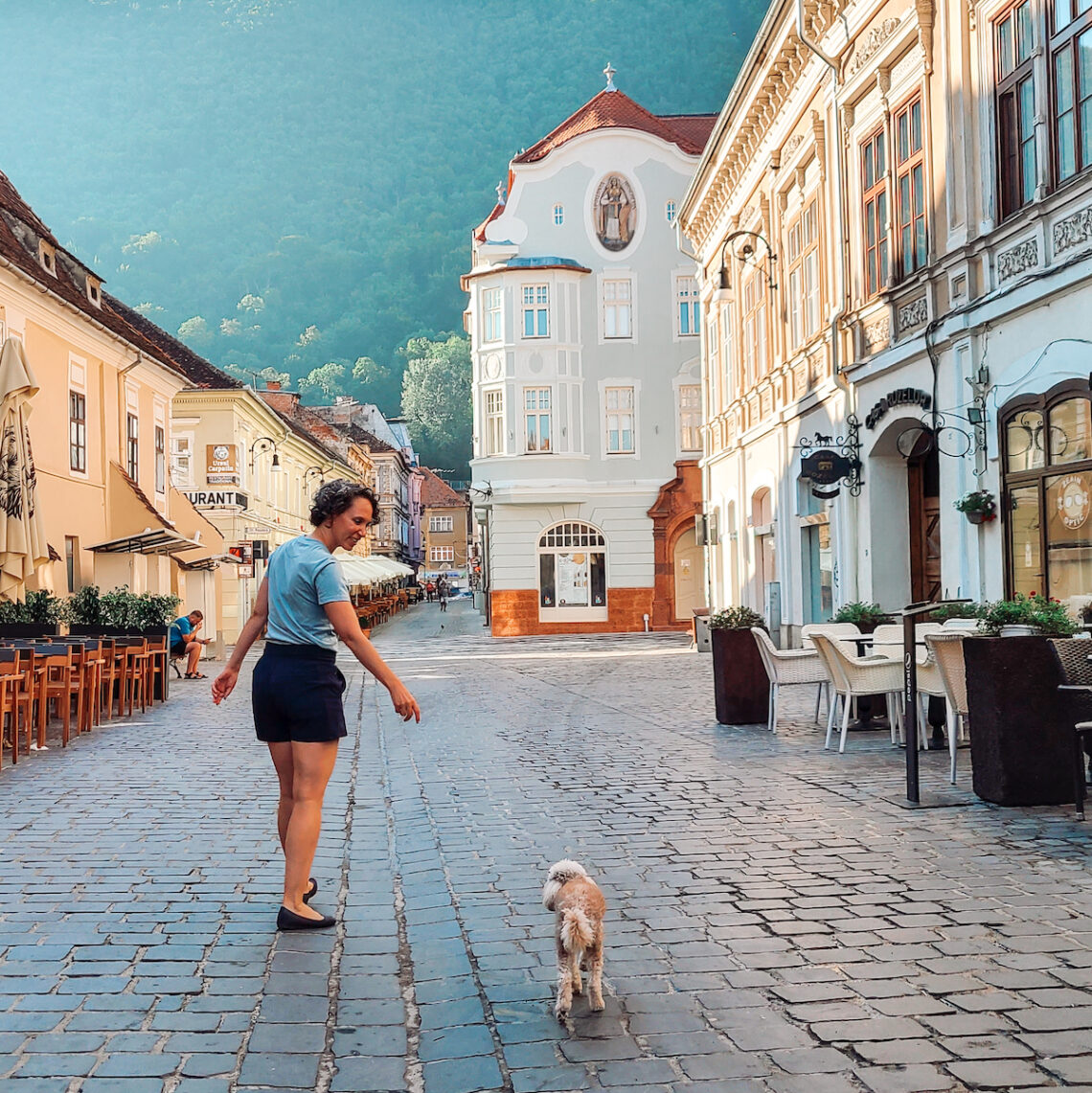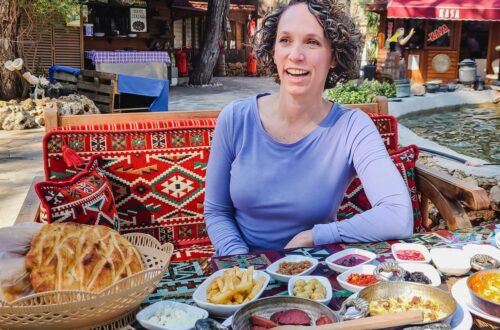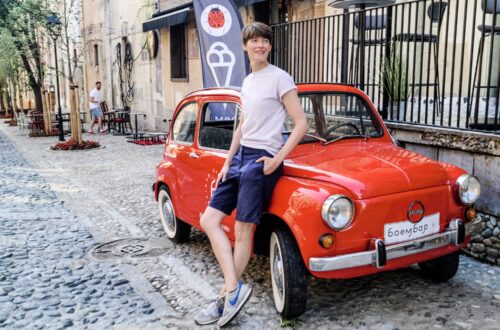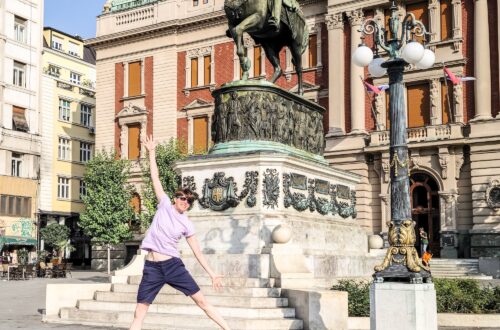
Why Brasov is the Ultimate Base for Exploring Transylvania
Plus it’s Surprisingly Affordable
Let’s be honest: the city of Brasov in Romania is a little on the small side. Once you’ve done the tour of old town — easily accomplished in a single morning — you might be feeling ready to move onto the next destination. And yet we stayed for an entire month.
If you’re wondering why, it turns out that Brasov is the ideal base for a create-your-own-adventure type of getaway. The surrounding countryside is filled with charming towns, excellent day hikes and a healthy number of castles. We were able to fill our schedule and still have activities left for next time.
And not that the cost of a stay is the most important factor, but who doesn’t enjoy landing a great deal? We were able to fully experience the region — we’re talking memorable excursions, frequent dining out, a nice apartment with a spectacular view — and pay far less than we paid for any other destination this summer.
Now that the month is over, it’s time to share the highlights: what we did, what we ate, where we stayed, and, of course, how much it all cost.
We always like to start our stays by getting to know our own backyard, in this case the old town of Brasov. We explored a lot of old towns during our summer tour of Europe; Brasov’s old town wasn’t the largest or the most historically significant but it’s compact, well preserved and has a stunning backdrop with the green hills of Mt Tampa.
And, like I said, it’s easy enough to tick through the city’s most significant medieval sights including the Council Square, the Gothic-style Black Church, Catherine’s Gate with its wonderful turrets, and the two hillside towers with views over the city (confusingly named the Black Tower and the White Tower, although both of them are now white).
Once that’s done, the next obvious activity is to ascend Mount Tampa for a view of the region from the Hollywood-style Brasov sign. It’s possible to take a cable car up and down but we enjoyed the 45-minute hike to the top — especially in the early morning hours when we were the only ones on the trail.
After that, there’s the rest of the region to discover. Since we had already spent a week exploring Transylvania on foot during our trek on the Via Transilvanica, we were able to skip excursions to the lovely towns of Sibiu, Sighișoara and Viscri. However, these are all lovely destinations and certainly worth the drive (or bus or train) from Brasov.
Instead, we focused on one of the things that Romania does really well: beautiful castles in scenic locations.
There are a number to choose from as day trips from Brasov; we went with Peleș Castle, the former summer residence of Romania’s very first King, and the neighbouring Pelisor Castle, built for his nephew and heir.
Although physically close to each other, the two castles are quite distinct and worth the separate admission fee. Peleș Castle is larger, filled with lavish furnishings and jam-packed with crowds. Meanwhile Pelisor is designed and furnished in an art nouveau style and, during the time of our visit, was relatively crowd-free.
For Peleș, we would recommend buying tickets in advance online and getting to the castle early, especially if visiting during the peak holiday season. There’s a separate charge to see each floor; just going to the first floor was enough for us.
We also saw Bran Castle, which is most famous for its association with Bram Stoker’s Dracula novel, however unfounded. Since we’re not a fan of crowds, we took in the castle while standing in a field across the road and felt that we had sufficiently ticked off that line item in our itinerary.
After touring castles, our next priority was to enjoy the outdoors. Not too far outside of Brasov is the ski resort of Poiana Brasov, which offers excellent hiking opportunities in the summer. We stopped at the wonderfully quirky Coliba Haiducilor for a traditional lunch: chicken soup, mushroom stew with polenta and a glorious serving of papanasi — fresh, hot donuts slathered in sour cream and fruit preserves — for dessert. Then we took the cable car to the top of the mountain and hiked the 11k back to Brasov.
The next stop was a solo mission for Gillian. If you’ve seen our adventures in Banos, the adventure capital of Ecuador, you’ll know that I carefully avoid any and all adrenaline activities (taking the cable car in Poiana Brasov was exciting enough for me). Meanwhile Gillian is always happy to hop on the nearest zipline and give it a try.
She took a bus to the Seven-Ladders Canyon where the activities included hiking for an hour, climbing the titular series of metal ladders through the canyon, and then ziplining for over an hour back to the start of the hike. This ziplining is for true fans only as the course is exceptionally long, totally unsupervised, and the landings — threadbare foam mats tied to trees — are very hard indeed.
It turned out that walking to our Airbnb in Brasov was also a bit of an adrenaline activity.
We typically stay right in the centre of town where we have easy access to tourist sights, dining out and grocery shopping. This time our preferred Airbnb just happened to be at the very top of a very steep hill. Anytime we wanted anything at all — a meal out, a loaf of bread — it was a long walk down and an even longer walk back up. Fortunately, the view from our apartment more than compensated for the daily glute workout.
The apartment itself was relatively nice; it had a spacious, bright living room with pleasant decorative touches. The other rooms — kitchen, bedroom, bathroom — were functional but not exceptional. The price, however, made up for any perceived shortcomings.
That brings us to the cost for a month-long stay in Brasov. Some of our entertainment involved paid attractions; some was free given that it revolved around enjoying the outdoors, although that typically involves some form of paid transportation. We spent a very reasonable $80 USD on entertainment and then another $110 USD on our transportation, which included a combination of bus rides, cabs and a car rental for a few days.
Our next category of dining out saw a decent amount of splurging through the month. The old town has a surprisingly number of high-end restaurants although most tend to offer Italian cuisine versus Romanian. Dei Frati was a stand out for Italian while La Ceaun was our preferred spot for Romanian and Brunch House our go-to for breakfast. We also enjoyed Kasho Lounge as a scenic spot for cappuccinos in the park.
We went out for a meal every couple of days and it usually cost around $25-30 USD. The prices were on the high side for Romania but certainly less expensive than dining out in the other cities we visited over the summer. In total, we spend $335 USD on dining out and then another $500 USD on groceries.
As for the cost of our Airbnb, those who have followed our adventures this summer know that we’ve spent quite a lot on our accommodations. Some of this is due to traveling in peak season to sought-after destinations in a post-COVID environment; some of this is due to good old fashioned inflation. To this point, we spent more on our Airbnb rental in Budapest than we’ve spent in any other city during four years of travel. And that apartment was fine but it certainly wasn’t luxurious by any standard.
Thankfully, our Airbnb in Brasov came in at a surprisingly low $825 USD for the month. That brings our total spend in Brasov to just $1,850 USD, making it one of our lowest-cost destinations yet, on par with Belgrade and Tirana. At that price, we could have easily fit in a few more boozy lunches at Dei Frati in the old town.
And Brasov really holds up as a destination, even though it’s so small. What we did in a month is just a small sampling of what’s available in the region. For a more complete picture of what Transylvania has to offer, take a look at our week of village-to-village hiking, complete with lovely countryside, old-fashioned homes and rustic multi-course meals.





2 Comments
Steph Abbott
Did you have to check your hiking poles for travel to Romania from USA?
Our Freedom Years
We actually traveled from Canada to Romania and yes, the luggage poles were in our checked luggage. We’ve looked into the rules around hiking poles and carry on luggage and it seems that they differ from airline to airline. We never want to take any chances so checked luggage seemed like the best approach.